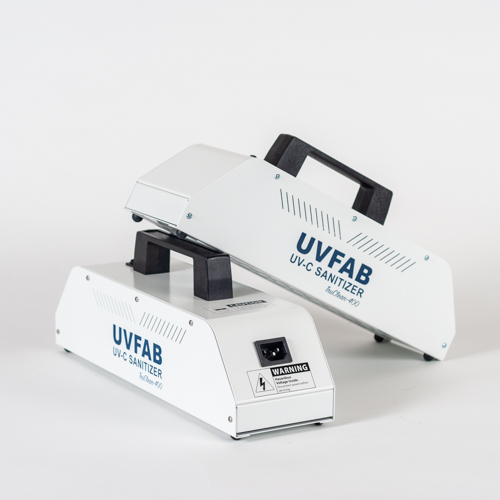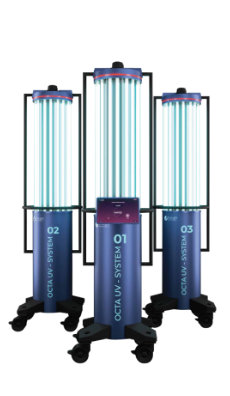UV Surface Disinfection Demystified: Understanding the Science Behind the Service
Wiki Article
Revealing the Conveniences of UV Disinfection: Making Sure Sanitized and clean Spaces
In the age of increased awareness surrounding hygiene and tidiness, the relevance of efficient disinfection methods can not be overemphasized. While conventional cleansing methods have long been depended upon, developments in modern technology have introduced an ingenious option that makes sure tidy and sanitized areas: UV disinfection. By using the power of ultraviolet light, this approach has obtained recognition for its capability to get rid of hazardous microorganisms and supply an extensive sanitization process. Nonetheless, the advantages of UV disinfection expand much beyond its effectiveness. This conversation will check out the science behind UV disinfection, its effectiveness on different microorganisms, its applications in different setups, and the advantages it holds over typical methods. In addition, we will delve right into the safety and security factors to consider that need to be thought about when applying UV disinfection. Prepare to discover a brand-new dimension of tidiness and uncover the untapped capacity of UV disinfection.
The Science Behind UV Disinfection
UV sanitation is a medically proven method that utilizes ultraviolet light to get rid of harmful microbes from surface areas and water. The science behind UV sanitation lies in the ability of UV-C light to harm the DNA and RNA of microbes, providing them incapable to recreate and triggering their ultimate fatality. UV-C light drops within the wavelength series of 200 to 280 nanometers, which is extremely reliable in destroying bacteria, infections, and other virus.When subjected to UV-C light, the hereditary product of bacteria takes in the energy from the light, leading to the development of thymine dimers. These dimers interfere with the typical duplication and transcription processes of the microbes, inhibiting their capacity to endure and duplicate (uv surface disinfection). The DNA and RNA damages brought on by UV-C light is dangerous to the microbes, making UV sanitation a reliable and trustworthy method for killing a wide variety of pathogens
UV sanitation is especially valuable in atmospheres where typical chemical anti-bacterials might be impractical or inefficient. It is a non-chemical approach that does not leave any type of residues or harmful by-products, making it safe for usage in food handling, healthcare centers, water therapy plants, and various other sectors. Additionally, UV sanitation is eco-friendly, as it does not add to the advancement of antibiotic-resistant germs or various other harmful toxins.
Effectiveness of UV Disinfection on Microorganisms
The performance of UV sanitation in removing microorganisms has actually been thoroughly examined and shown in countless clinical researches. UV radiation has the capability to suspend a vast array of microorganisms, including infections, germs, and fungis, by damaging their DNA or RNA. This prevents them from duplicating and triggering infections.One research published in the American Journal of Infection Control discovered that UV sanitation worked in decreasing the visibility of numerous drug-resistant germs in health center spaces. Another study performed by the National Institute for Occupational Safety and security and Health demonstrated that UV sanitation had the ability to eliminate 99.9% of the influenza virus on surface areas.
UV sanitation has actually likewise shown assurance in combating the spread of healthcare-associated infections (HAIs) According to a research study published in The Lancet, the use of UV-C light in enhancement to standard cleaning protocols dramatically minimized the occurrence of HAIs in a medical facility setting.
Moreover, UV sanitation has shown to be reliable against arising pathogens, such as the severe acute breathing disorder coronavirus 2 (SARS-CoV-2), which creates COVID-19. A research conducted by the National Arising Transmittable Conditions Laboratories showed that UV-C light can inactivate the virus on surfaces within seconds.
Applications of UV Disinfection in Various Settings
With its tested efficiency in removing virus, UV disinfection has actually located applications in a variety of settings. UV sanitation is likewise useful in water treatment plants, where it is used to eliminate dangerous bacteria and give risk-free drinking water.An additional important application of UV sanitation is in the air purification sector. UV air cleansers are utilized in domestic, industrial, and industrial settings to remove air-borne bacteria, infections, and mold spores. This technology is especially helpful in settings where people are more prone to respiratory infections, such as health centers, schools, and office structures.
In addition, UV sanitation is progressively being utilized in public transportation systems, such as trains and buses, to preserve tidy and sanitized areas for passengers. UV light is employed to disinfect surface areas and air inside the cars, decreasing the risk of spreading out infectious illness.
Benefits of UV Disinfection Over Traditional Approaches
In contrast to traditional approaches, UV sanitation supplies a variety of unique advantages that make it a preferable choice in various industries and setups. One significant benefit is its efficiency versus a large range of microorganisms, including germs, infections, and fungi. Unlike chemical disinfectants that may have limited efficiency versus specific pathogens, UV sanitation is a non-selective procedure that can eliminate or suspend a broad range of hazardous organisms.
Another benefit of UV disinfection is its ability to provide effective and quick disinfection. Standard disinfection approaches typically require longer call times or multiple actions to achieve the desired level of sanitation. On the other look at these guys hand, UV light can provide prompt and continual disinfection, decreasing downtime and enhancing efficiency in numerous applications.
UV disinfection additionally uses a secure and eco friendly option to traditional disinfection techniques. uv surface disinfection. Unlike chemical representatives, UV light does not leave any hazardous deposits or byproducts, making it appropriate for use in delicate atmospheres such as food handling facilities, healthcare settings, and water therapy plants
Furthermore, UV disinfection is an economical solution over time. While the in advance investment for UV sanitation systems might be greater than conventional methods, the operational costs are typically reduced. UV lamps have a lengthy life-span and call for marginal upkeep, leading to decreased labor and substitute prices.
Safety Factors To Consider for UV Disinfection
Thinking about the potential risks connected with UV sanitation, it is vital to resolve the security factors to consider associated with executing this innovation. UV disinfection utilizes ultraviolet light to kill or inactivate bacteria, making it a reliable method for disinfecting numerous surfaces and objects. It is crucial to comprehend that UV radiation can also present threats to human wellness if proper security actions are not adhered to.Primarily, straight exposure to UV radiation can cause injury to the skin and eyes. Extended exposure can bring about sunburn, skin damage, and also an enhanced threat of creating skin cancer. Therefore, it pop over to this site is critical to make sure that UV sanitation systems are correctly confined and furnished with safety functions such as automated shut-off systems or movement sensing units to stop unexpected direct exposure.

Moreover, correct training and education and learning are necessary for those in charge of operating UV sanitation systems. They should be conscious of the possible hazards, understand the safety methods, and understand just how to manage and maintain the tools appropriately.
Verdict
UV sanitation can be used in numerous settings, consisting of healthcare facilities, food handling plants, and water treatment systems. Compared to traditional techniques, UV disinfection has benefits such as faster sanitation times, very little chemical use, and no hazardous results.UV sanitation is a medically tried and tested approach that utilizes ultraviolet light to remove dangerous microbes from surface areas and water. The DNA and RNA damages triggered by UV-C light is deadly to the microorganisms, making UV sanitation a efficient and trustworthy technique for eliminating a wide array of microorganisms.
An additional advantage of UV sanitation is its capability to provide quick address and efficient disinfection. UV disinfection utilizes ultraviolet light to kill or suspend microbes, making it a reliable approach for disinfecting different surface areas and objects. Compared to traditional techniques, UV disinfection has advantages such as faster sanitation times, minimal chemical use, and no dangerous byproducts.
Report this wiki page